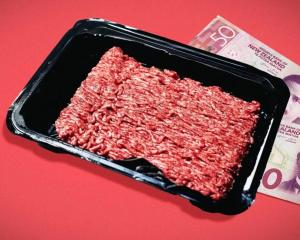
Waikaka farmer and Beef + Lamb New Zealand (BLNZ) Southern South Island Farm Council chairman Andrew Morrison said lambs on the ground were growing fast.
"There is lots of feed and the weather has been pretty benign," Mr Morrison said.
"The ewes are milking brilliantly and the lambs are doing well.
"We had a couple of [weather] challenging days but early indications are that it has been a good season."
He said some farmers had issues with bearings, especially with the lush grass growth.
"Some guys are getting through well and some guys take a bit of a pasting."
Ida Valley sheep, beef and deer farmer Cameron Nicolson said lambing was going well but there was an issue with cast ewes.
"We have been going around the ewes three times a day to try to stand them up."
Depending on temperature and whether they are lying up or downhill, they could die within a couple of hours without attention.
"I’ve been talking to a few people who said cast sheep were pretty general."
He said the grass growth made the ewes heavier. They had pre-lamb shorn but he still noticed the extra kilograms when lifting them into the trailer.
In addition, the weather could still be "dicey".
"It’s hard to know what to dress for."
Omakau sheep and beef farmer Donny Maclean said the lambing had been "OK" and the weather a little warmer than usual and grass growth was "better than average".
"We have not had many losses, so it has been average to better than normal [this season]," Mr Maclean said.
"Some years we have been nearly irrigating [at this time] but we are not there yet and that helps."
Beef + Lamb New Zealand Southern South Island extension manager Olivia Ross said there seemed to be few lamb losses apart from some farms in the Te Anau basin and Northern Southland, when they were hit by the snow and rain in early September.
"The one positive is the aquifers have been replenished following a mild winter, which helps to push back risks of drought further into the season," she said.
AgriBusiness Ltd consultant Deane Carson said there were quite good pasture levels, the ewes were lactating well and the lambs were looking really good.
"Farmers still have hogget lambing to go and while most people have finished the bulk of mixed-age ewes, some in the high country have just started."
However, there had been losses in the Te Anau basin and Mossburn earlier in the season.
He has developed a database of scanning to weaning data of about 300,000 lambs since about 2009.
"This year scanning [data] was the same as it was last year."
The data also indicated farmers had managed last season’s drought situation well. He said there had been a "mixed bag" of bearings.
"In a year where we have a growthy spring, we get more bearings."













